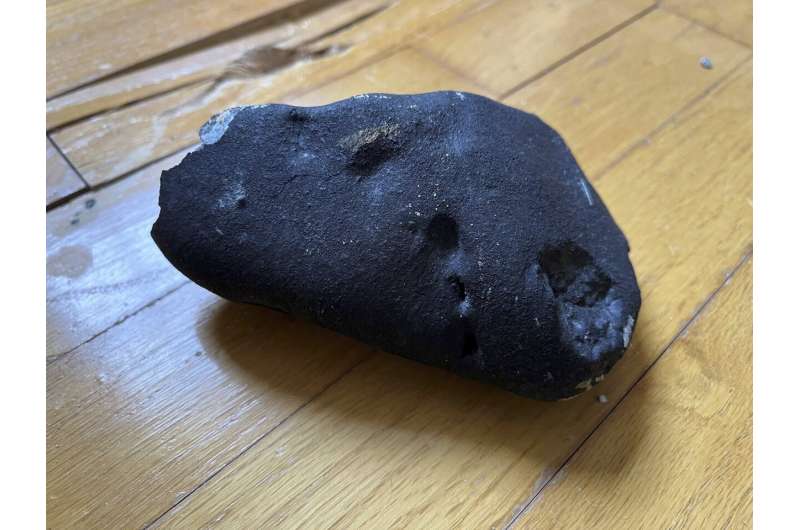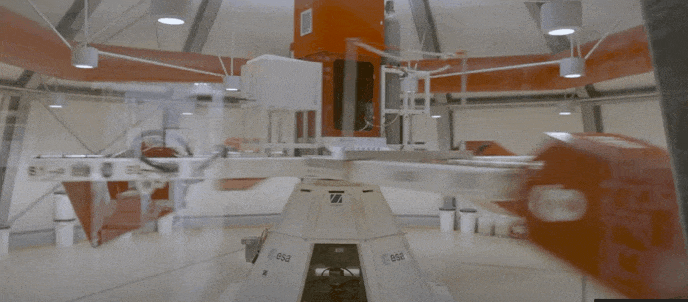
Copernical Team
Rocket Lab to launch small satellite swarm for NASA
 Rocket Lab USA, Inc. (Nasdaq: RKLB) has signed a deal to launch NASA's Starling mission, a multi-CubeSat mission to test and demonstrate autonomous swarm technologies, as well as automated space traffic management for groups of spacecraft in low-Earth orbit.
The four Starling small satellites have been manifested on an Electron commercial rideshare mission scheduled for lift-off from Rocke
Rocket Lab USA, Inc. (Nasdaq: RKLB) has signed a deal to launch NASA's Starling mission, a multi-CubeSat mission to test and demonstrate autonomous swarm technologies, as well as automated space traffic management for groups of spacecraft in low-Earth orbit.
The four Starling small satellites have been manifested on an Electron commercial rideshare mission scheduled for lift-off from Rocke Arianespace to launch the first active debris removal ClearSpace mission with Vega C
 Arianespace and ClearSpace signed a launch contract for ClearSpace-1, the first active debris removal mission that will capture and deorbit a derelict space debris of 112 kg. The launch, scheduled starting as soon as the second-half of 2026, will use the European light launcher Vega C to release the spacecraft into a Low Earth/Sun-Synchronous drift orbit for commissioning and critical tests. The
Arianespace and ClearSpace signed a launch contract for ClearSpace-1, the first active debris removal mission that will capture and deorbit a derelict space debris of 112 kg. The launch, scheduled starting as soon as the second-half of 2026, will use the European light launcher Vega C to release the spacecraft into a Low Earth/Sun-Synchronous drift orbit for commissioning and critical tests. The Rocket Lab completes custom-built Photon spacecraft for Varda Space Industries
 Rocket Lab USA, Inc. (Nasdaq: RKLB) has completed and shipped a custom Photon spacecraft developed for Varda Space Industries ("Varda"), a leading in-space manufacturing and hypersonic re-entry logistics company.
The Rocket Lab-designed and built Photon spacecraft will provide power, communications, propulsion, and attitude control to Varda's 120kg capsule that will produce pharmaceutical
Rocket Lab USA, Inc. (Nasdaq: RKLB) has completed and shipped a custom Photon spacecraft developed for Varda Space Industries ("Varda"), a leading in-space manufacturing and hypersonic re-entry logistics company.
The Rocket Lab-designed and built Photon spacecraft will provide power, communications, propulsion, and attitude control to Varda's 120kg capsule that will produce pharmaceutical Chasms on the flanks of a martian volcano

Mars has some of the most impressive volcanoes in the Solar System. ESA’s Mars Express has now imaged the pitted, fissured flank of the planet’s second-tallest: Ascraeus Mons.
Possible meteorite crashes into New Jersey home, no injuries

Juice flies Ariane 5: from preparation to liftoff at Europe’s Spaceport
 Video:
00:04:00
Video:
00:04:00
Timelapse of the integration and launch of Juice.
ESA’s latest interplanetary mission, Juice, lifted off on an Ariane 5 rocket from Europe’s Spaceport in French 09:14 local time/14:14CEST on 14 April 2023 to begin its eight-year journey to Jupiter, where it will study in detail the gas giant planet’s three large ocean-bearing moons: Ganymede, Callisto and Europa.
Juice – Jupiter Icy Moons Explorer – is humankind’s next bold mission to the outer Solar System. This ambitious mission will characterise Ganymede, Callisto and Europa with a powerful suite of remote sensing, geophysical and in situ instruments to discover more about these compelling destinations as potential habitats
Hypergravity access awarded to Bolivian and Macau teams

University teams from Bolivia and Macau have won experimental access to ESA’s hypergravity-generating Large Diameter Centrifuge through the latest round of a research programme supported jointly by ESA and the United Nations Office of Outer Space Affairs, UNOOSA.
Virginia Tech, George Mason to develop networking for satellite constellations
 The race is on to provide high speed satellite internet to the Earth's most remote areas. New tech companies such as Starlink, One Web, and Amazon's Kuiper are competing with traditional, established "satcomm" companies such as Thuraya and Inmarsat to provide global high speed, low latency satellite internet across the globe. These new mega-constellations rely on tens of thousands of small low e
The race is on to provide high speed satellite internet to the Earth's most remote areas. New tech companies such as Starlink, One Web, and Amazon's Kuiper are competing with traditional, established "satcomm" companies such as Thuraya and Inmarsat to provide global high speed, low latency satellite internet across the globe. These new mega-constellations rely on tens of thousands of small low e Latin American financial institution deploys Gilat for satellite connectivity
 Gilat Satellite Networks Ltd. (Nasdaq: GILT, TASE: GILT) reports that a major financial institution in Latin America is investing millions of dollars in Gilat's satellite connectivity technology.
Thousands of Gilat's VSATs (Very Small Aperture Terminals) are being deployed across the nation to provide communications backup over satellite, improving the reliability and robustness of the net
Gilat Satellite Networks Ltd. (Nasdaq: GILT, TASE: GILT) reports that a major financial institution in Latin America is investing millions of dollars in Gilat's satellite connectivity technology.
Thousands of Gilat's VSATs (Very Small Aperture Terminals) are being deployed across the nation to provide communications backup over satellite, improving the reliability and robustness of the net General Atomics delivers spacecraft simulator supporting NASA TSIS-2 program
 General Atomics Electromagnetic Systems (GA-EMS) has announced it has developed and delivered a spacecraft simulator to the University of Colorado (CU) Laboratory for Atmospheric and Space Physics (LASP) in support of the Total and Spectral solar Irradiance Sensor- 2 (TSIS-2) spacecraft program.
GA-EMS is under contract with NASA's Goddard Space Flight Center (GSFC) to build the TSIS-2 spa
General Atomics Electromagnetic Systems (GA-EMS) has announced it has developed and delivered a spacecraft simulator to the University of Colorado (CU) Laboratory for Atmospheric and Space Physics (LASP) in support of the Total and Spectral solar Irradiance Sensor- 2 (TSIS-2) spacecraft program.
GA-EMS is under contract with NASA's Goddard Space Flight Center (GSFC) to build the TSIS-2 spa 
